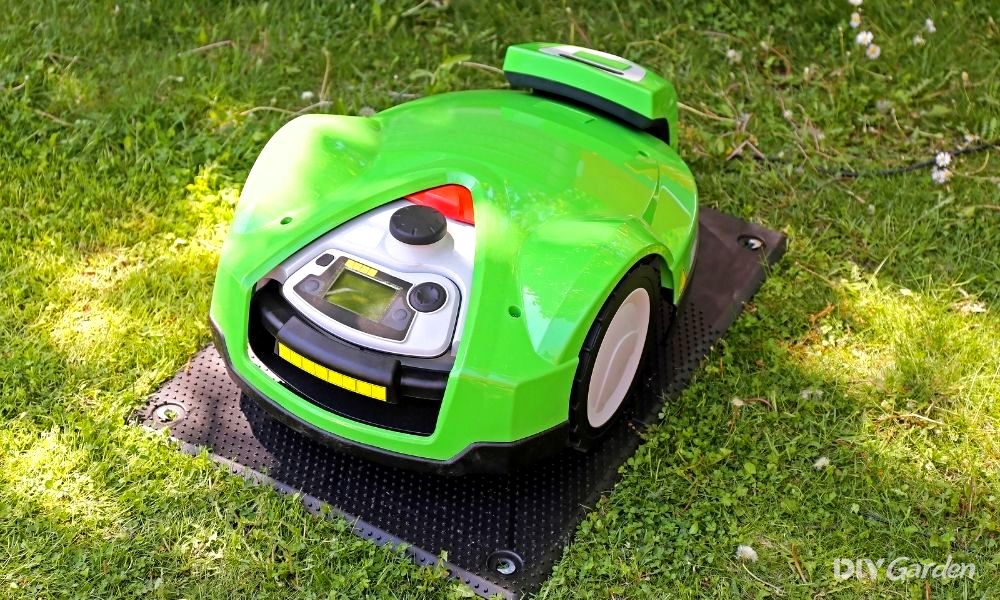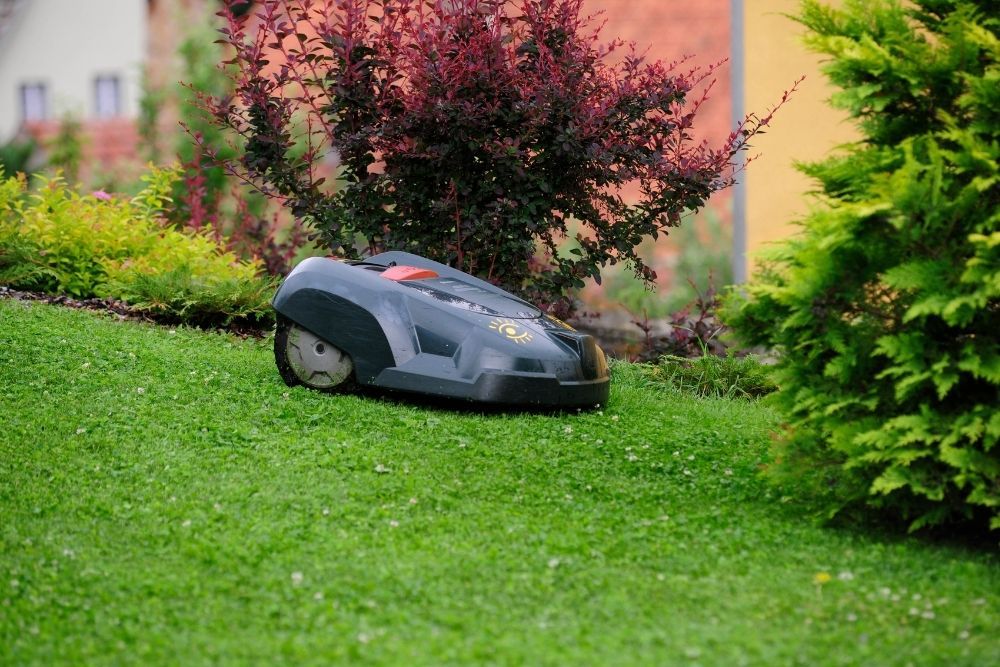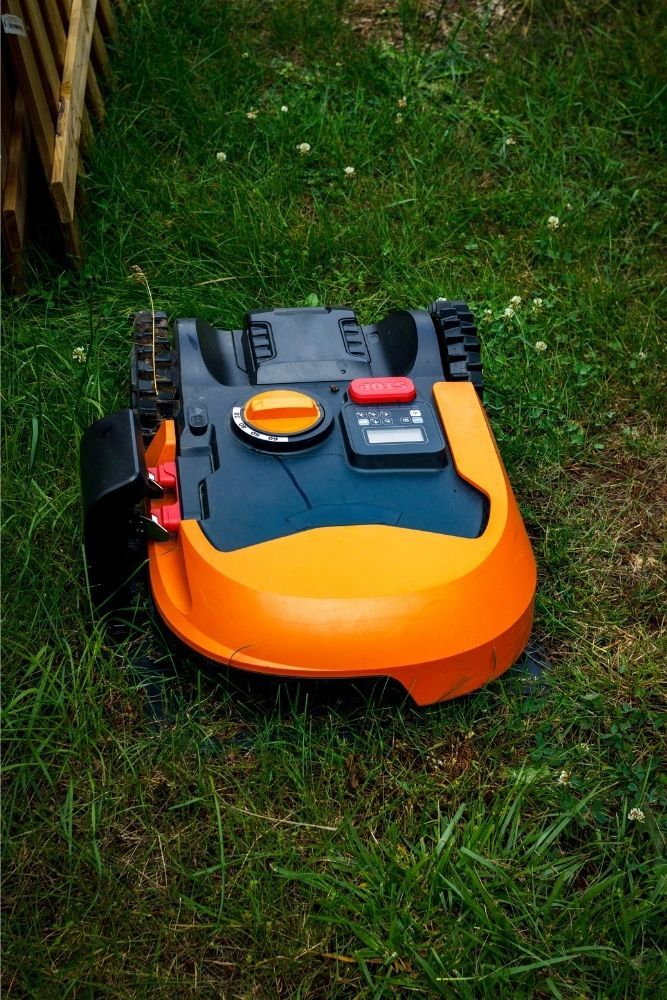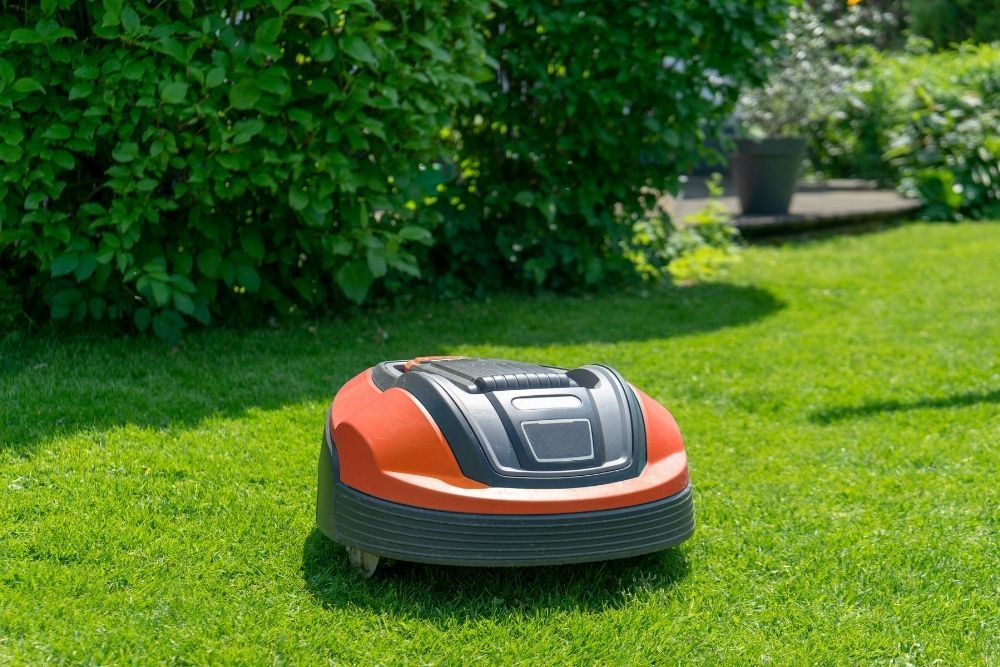
Forget hoverboards and flying cars, there’s one futuristic machine that has already arrived: the robotic lawn mower. First made available in 1969, you might be surprised to learn that robot lawn mowers have already been in the public sphere for a little over five decades.
Of course, the ‘MowBot’ of 1969 wasn’t quite working to the same level as today’s robotic mowers, but there are a few design elements that have stood the test of time. In fact, even looking at the ’60s ‘bot, you can see just how much it still influences modern robot mowers.
If you’re looking to learn a little more about robot mowers, you’re in the right place. This article has been put together to answer the question: how do robotic lawn mowers work? We’ll do this by deep-diving into every aspect of these ingenious machines, to give a better understanding of how useful they can be in the garden.
READ NEXT: The UK’s Best Robot Lawn Mowers
We’ll take a look at:
- Cutting system
- Perimeter detection
- Mowing style
- Movement design
- Safety components
Then, we’ll uncover why manufacturers purposefully keep the design of these mowers simple, when we have so much technology now at our fingertips. So, let’s get started!
How Do Robotic Lawn Mowers Work?
1. Unique Cutting System
I know what you’re thinking: we’ve all seen a lawn mower before, we know how they work. But robot lawn mowers don’t function in the same way as a regular machine does.
Because robot lawn mowers cut little and often, rather than cutting a large amount like standard mowers, they are built with smaller blades. These blades work slowly and are designed to skim off just the top of the grass blade each time. Many robot lawn mowers automatically adjust their cutting height according to lawn conditions (which is great news for hassle-free lawn care) but they can often be manually programmed as well.
Robot lawn mowers use one of two cutting systems. They will either have a rotating disc cutting system or a solid blade cutting system. Both are effective. Rotating disc systems are marginally quieter than solid blade system, although solid blades are considered slightly more efficient. Both types of blade are replaceable (though robot mowers don’t need the blade to be replaced that often).
Given that robot mowers will only cut a small amount of grass with each run, they don’t need collection bags. Instead, the mower mulches the clippings as it goes along, so your grass is left in tip-top condition.
The robot lawn mower’s unique cutting system also ensures your garden is looking prim and proper every single day, not just the day you cut it. Who could ask for more?
2. Perimeter Detection
You don’t need to worry about a robot mower running rogue and chomping through your favourite flowers. Although they have relatively free-reign in the garden, you still have complete control over where your robot mower can go. All you have to do is lay out a perimeter wire before you switch your robot mower on.
The mower has a navigation system that can detect the wire. This is much like a car with sensors that can detect when it’s close to a wall or fence. The robot will change direction when it detects the wire, staying away from your beloved plants (and stopping it from falling off the verge too).
You can even use perimeter wire to map out obstacles that sit smack-bang in the middle of your garden, and they’ll know to avoid that, too!
Some robot mowers don’t require a perimeter wire, which makes them quicker to set up. They can detect what type of surface is underneath them, and know to stick to grass. However, this technology isn’t perfect yet.
Additionally, a lot of modern robot mowers are fitted with a 360° laser that locates obstacles. If your dog is sleeping in the middle of the lawn, the robot mower will adjust its path instead of barging through.
3. Random Mowing Style
A robot mower won’t give you crisp lines like you’d get with a regular push mower, but it will saves you the hassle of mowing altogether, which I’d chalk down as a win.
After your robot mower has cut the grass, you may not even notice that it’s done anything at all. That’s the beauty of robot mowers. By frequently cutting small amounts, in a random mowing style, the grass always appears the same length.
Instead of mowing across your garden in a standard pattern, a robot mower will turn whenever it’s near the perimeter wire or reaches an obstacle. It will then set off in another direction, entirely at random.
This mowing style may seem counterproductive, given that, theoretically, the mower could go over the same patch of grass multiple times. However, in reality the random trajectory means that all grass eventually gets covered, especially as robot mowers can mow the lawn every day, seven days a week. They won’t cut lower than programmed either.
Because of their random mowing style (as well as their battery capacity) robot mowers are generally best suited to small/medium gardens. If you’re trying to work out what type of mower will best suit your garden, we’ve written a separate article on exactly that!
4. Seamless Movement Design
One of the reasons that today’s robotic mowers still resemble the MowBot of 1969 is that the design just works. Keeping a low centre of gravity ensures that the mowers are stable and stay upright. For this reason, many robot mowers can even handle low slopes (around 25° slope) without toppling.
This means if you have got a hilly garden, you don’t have to feel like a robot mower is off the cards. Plus, wouldn’t it be nice to avoid the effort of mowing up and down slopes?
With robot mowers, you don’t have to worry about track marks, either. The wheels are specifically designed to protect the grass, not slice through it.
5. Built-In Safety Components
Safety is a natural concern when it comes to robot mowers. It’s only logical – you’re placing a robotic machine, with blades, in your garden unattended. When you put it like that, robot lawn mowers sound like a foolish idea!
However, manufacturers have thought this one through. The majority of robot mowers are fitted with numerous safety features to make sure you feel comfortable leaving the machines unsupervised in the garden.
For starters, the blades are always tucked away underneath the casing, so they’re never out on display. This prevents injuries if, on the unlikely possibility, you were to bump into the mower while it’s working.
Many robot mowers can also sense if they are picked up off the ground, and their blades will shut off if this happens.
READ NEXT
Why are Robotic Lawn Mowers Purposefully Kept Simple?
With the crazy technology of today, robot mowers could be much more advanced than they are. But manufacturers purposefully skip on the fancy technology. Why?
There’s a simple reason: cost. As it stands, robot lawn mowers are typically priced between £400 – £3000. That’s already a sizeable investment. If manufacturers were to include all of the technology available to them, robot lawn mowers would become fairly unobtainable items.
For example, many manufacturers choose to include a perimeter wire, instead of laser technology to detect garden terrain, in order to keep costs down. Similarly, allowing robot mowers to randomly cut grass, instead of setting up a systematic mowing system, also controls the price.
Manufacturers know that the everyday customer won’t splash out that much cash on a garden tool like a robot lawn mower. Instead, you’d stick with a regular push mower because it’s a whole lot cheaper.
The only way they’ll get customers like us to switch from what we’re used to, is to make it an affordable option – so, fortunately, that’s what they do!
READ NEXT: Flymo EasiLife vs WORX Landroid Robot Lawn Mower
Final Remarks
Robotic lawn mowers are a worthy addition to any garden, especially when you’re stretched for time or you’re tired of pushing your lawn mower on uneven terrain.
With a unique cutting system and a seamless motor design, your garden will look pristine 365 days of the year, not just on designated mowing days.
A basic perimeter detection system and simple mowing style ensure the robot lawn mower is affordable for everyone. As technology advances further, more advanced systems will likely be added to robot mowers – as soon as they become cost effective.
And you don’t have to worry about safety – the manufacturers have done that for you with in-built safety components!
Now, all that’s left to do is put that push lawn mower back in the shed and go get yourself a robot mower instead. Forget all that time spent mowing the lawn during summer, what will you do instead!
Now you know how they work, but you may still be left wondering, “are they worth buying?” If that’s you, check out our article, Are Robot Lawn Mowers Any Good in 2023?



